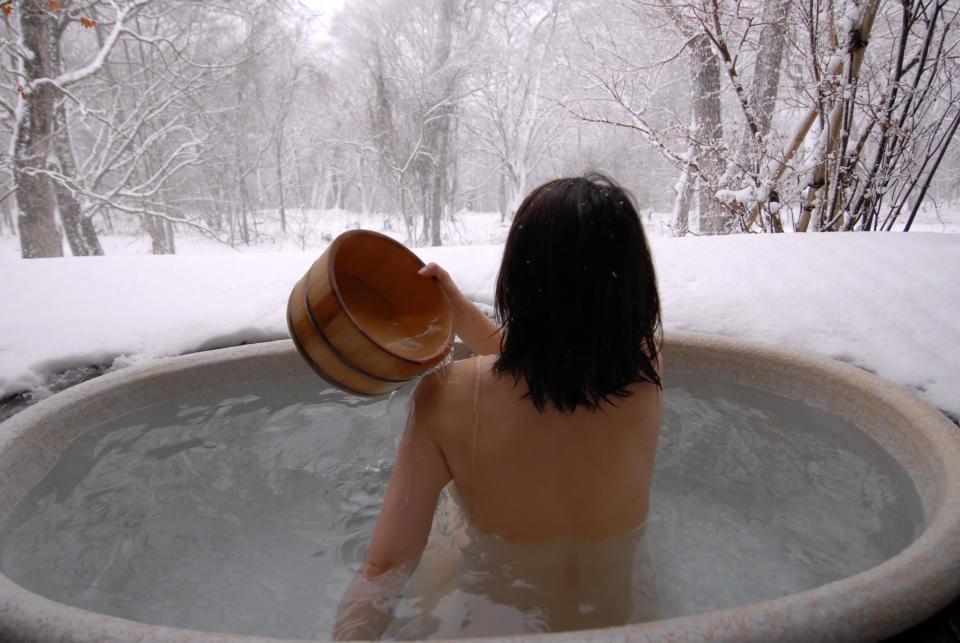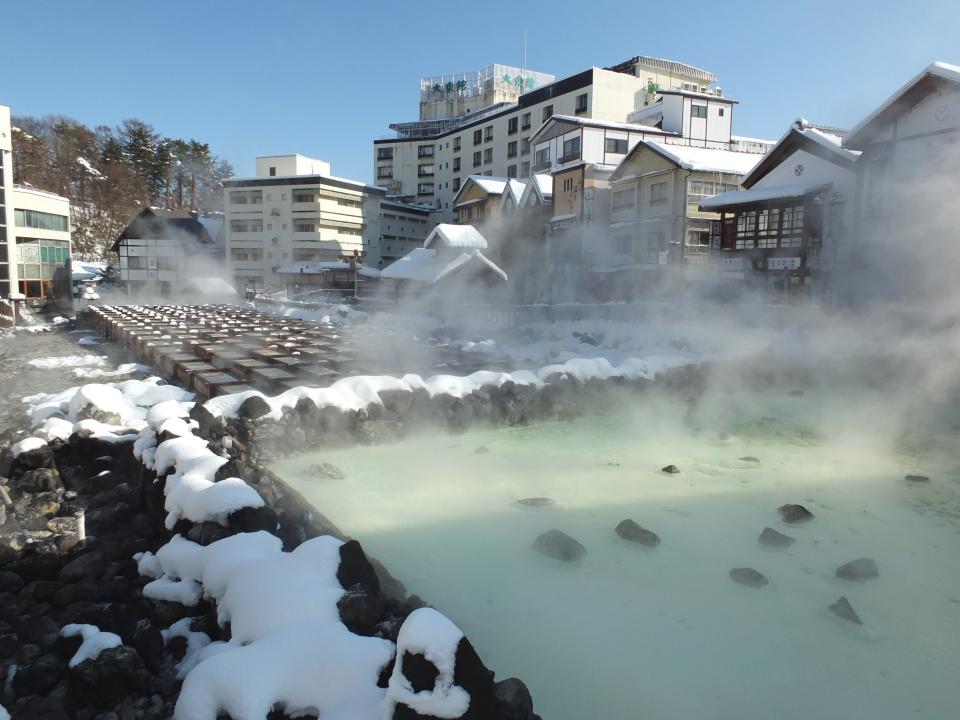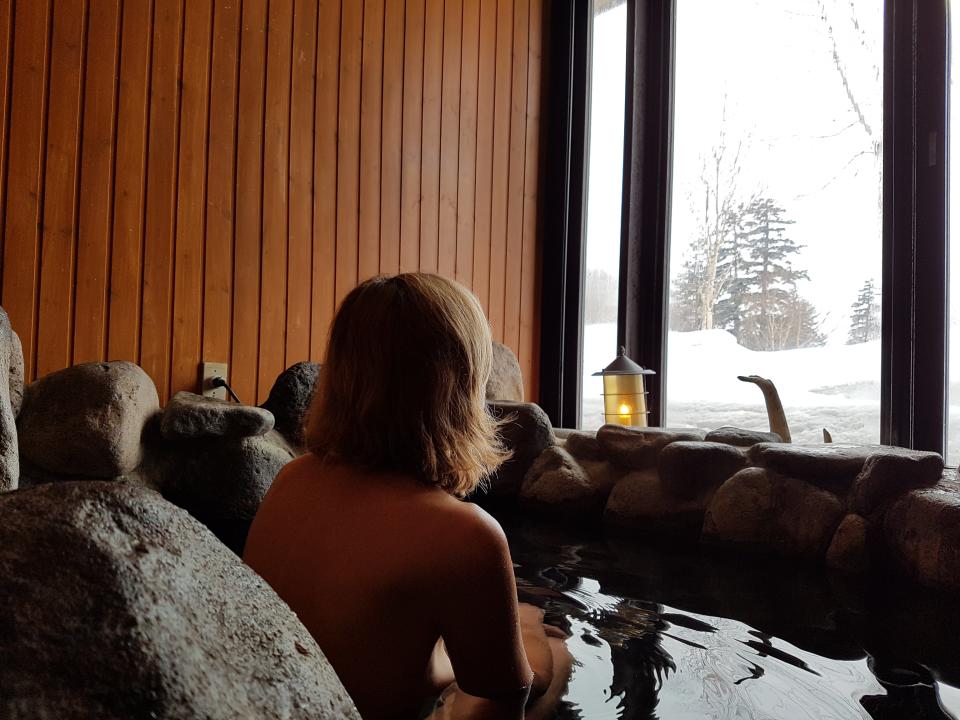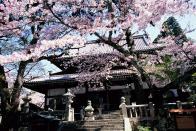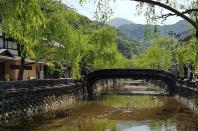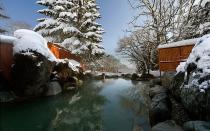Take the plunge into one of Japan's best onsens
I am up to my neck in hot water. And it’s wonderful. Around me, naked Japanese women soak contemplatively, their white flannels neatly folded on their heads. Beyond, a serene blue sea laps mesmerically at an empty beach, while in the distance is the shadowy outline of Honshu, the main island of Japan, from which I have just arrived by Shinkansen (bullet train) on the new route that opened up last year into Hakodate, Hokkaido.
I am sitting in an onsen (natural hot spring) bath in Hakodate’s hot-water hotspot, Yunokawa. This is my first taste of Japan’s hot-spring culture, a characteristic mix of physical benefits, relaxation, unintrusive companionship, carefully observed etiquette and calm communing with nature.
Japan has been onsen bathing since at least the eighth century, when belief in its curative powers was primary. An onsen is defined as a natural hot spring with water emerging at 25C or hotter and containing at least one of a defined list of 19 elements.
Onsen baths are taken at any time of day (or night), after washing and always naked (but for the optional flannel). For visitors to Japan, they are not only a pleasurable experience but a great way to get beneath – or at least down to – the skin of this fascinating, inscrutable country.
With 2,300 known onsen across the nation, Japan offers a multitude of places in which to soak up the local ambience, from the deep south to the wilds of northern Hokkaido. Here is a selection of my favourites.
Asahidake Onsen, Hokkaido
Snow falls gently as the steam whorls up from the granite bath. Ice-flecks prick my skin as I move quickly to an individual pool, like a submerged wooden sunbed, and lie blissfully warm looking up at the snow-laden trees. Inside, I relax in a cypress-wood pool looking out through a picture window on to the pristine white powder, dark green conifers and silvery Japanese birch – the landscape through which I have just returned from snowshoeing (jangling a bell to ward off the Hokkaido brown bear!).
Asahidake Onsen is a small resort village part way up Hokkaido’s highest mountain, volcanic Mount Asahi, in Daisetsuzan (Big Snow Mountain) National Park. Seasons here lag weeks behind the rest of Japan (it was still under a couple of metres of snow in May). The ropeway (cable car) leads to caldera hikes in summer. In winter, there is extreme off-piste and cross-country skiing, while people come here year round to relax in the handful of high-quality hotel onsen (open to non-residents for a small fee).
Where to stay
La Vista Daisetsuzan (japan-ryokan.net/lavistadaisetsuzan; double rooms from 18,519 yen/£132). A cosy, comfortable wood-beamed hotel that could, at first glance, be in Gstaad. But all the guests are Japanese and most wear the provided samue, like soft martial arts suits, and carry little bead-handled baskets of towels and flannels for the onsen. Room only.
22 weird and wonderful things about Japan
Gero Onsen, Gifu Prefecture
It looks like a stone drinking fountain, but I am told it is a hand onsen. I plunge in up to my wrist – and rapidly withdraw. The water is a skin-reddening 55C. A gradual approach succeeds as I join the Japanese tourists soaking their feet around a little white statue of Venus. We are enjoying one of the eight popular free foot onsen on the streets of this deeply historic but physically modern onsen town, rarely visited by Europeans.
The original Gero hot spring was blocked by a powerful earthquake in 1265. But, in a typical onsen creation story, a white heron (whose image appears on everything from weathervanes to manhole covers) is said to have led the villagers to a new hot spring before flying up the mountain. Where it perched, the locals built the onsen temple dedicated to the Buddha of Healing. We climb the 173 steps to this peaceful spot overlooking the town, its flat river valley and round-topped mountains of dense green forest. Japan is 70 per cent forest and the natural world is an important part of onsen culture.
There is great scenic walking around the town. We opt for Osaka Waterfalls and an ancient lava flow (osaka-taki.com/en) before returning for a full body soak. The water is silky smooth. Seventeenth-century Confucian philosopher-to-the-shoguns Hayashi Razan declared Gero one of the top three onsen in Japan (alongside Arima, see below, and Kusatsu).
There are three public baths and about 40 ryokan (Japanese hotels with tatami mat floors and futon beds) that open their onsen via a three-visit pass (Y1300/less than £10). By the town bridge there is also an unregulated rotenburo (outdoor onsen) where swimsuits are unusually (but necessarily) allowed. Just beyond the rotenburo down an alley on the right, we find a local man filling his car. But this isn’t a petrol station; it’s an onsen station. He is filling an insulated tank in his boot with 200 litres of 55C onsen water – costing about £1 – to take home for the family bath.
Where to stay
Gero Onsen – Suimeikan (suimeikan.co.jp), also known as Bijin-no-Yu, or “baths of beauty”, has rooms from Y14,040/£100 per person (two sharing) on b&b basis. Alternatively, the traditional Yunoshima-kan (yunoshimakan.co.jp) – in which Emperor Akihito and his wife have stayed – offers rooms from Y16,100/£115 per person (two sharing) on half-board basis (with kaiseki Japanese food).
Arima Onsen, Kobe
The Old Town here is a lovely little traditional onsen village with winding streets and old-style wooden shops. Onsen sources, such as miniature steaming oil wells and bubbling fountains, dot the town. I stop at Tenjin-Sengen (Tenjin Spring) which puffs like an ancient steam engine as it pumps up Arima’s kinsen (golden) water (actually a muddy red-brown due to iron content) at 98C – and spreads a whiff of sulphur over the Tenjin shrine in whose grounds it stands.
In a nearby park, Tansan-Sengen (meaning carbonate spring) bubbles up crystal-clear ginsen (silver) waters into a decorative pool. The high carbonate content of this spring spawned Arima’s speciality soda cracker, tansan senbei, which we watch being mixed and pressed by hand in a specialist biscuit shop.
The “golden” and “silver” waters are separately pumped to two public baths and many hotel onsen. The town also has a public “radioactive” onsen (natural radon), which I avoid.
Arima Onsen’s famous health-giving history dates back to the seventh century. Its waters are said to have fulfilled Emperor Koutoku’s wish for an heir (Prince Arima). As a result, the town has for centuries produced brightly patterned silk calligraphy “doll brushes” from which a little baby pops up as you write.
General amusements are almost as much a part of a hot-spring town as the baths. These are holiday centres after all, and Arima is unusual in still having a very traditional form of onsen town entertainment. Hidden behind a screened frontage, a smart little geisha bar-café (Ito, 821 Arima-cho) offers two-hour sessions (typically pricey at Y20,000 per person, about £140) to drink and eat with the geisha, and watch them perform ancient Japanese music and dance.
Where to stay
The luxury riverside ryokan Gekkoen Yugetsusanso (ryokan.or.jp/english/yado/main/96160) has its own “golden” and “silver” indoor and outdoor onsen, as well as some rooms with a private onsen tub. From Y18,000 (£130) per person, half board.
Kinosaki Onsen, Hyogo Prefecture
In Kinosaki, you are spoilt for choice. Many of the 80 small ryokan tucked into this little town have their own onsen and almost all provide a free pass to the town’s seven public baths. Kinosaki styles itself as one big ryokan with the station as its entrance, streets as corridors, your own ryokan as your room. And it does feel like that as we join the gaggles of people clip-clopping in geta (wooden flip-flops) and yukata (relaxed cotton kimono) from bath to bath along the cobbled, willow-lined streets. From the station and the neighbouring bathhouse (the largest and most diverse) to the oldest and furthest onsen is only about 15 minutes’ walk (30 if you aren’t used to geta!).
If you have time to visit only one onsen resort, Kinosaki has a bit of everything. And it is all made particularly easy by the recently opened English-speaking information centre next to the station, the ryokan booking service opposite and a free shuttle to any ryokan.
The town has baths in sweet-smelling cypress-wood, granite and even “Roman” tiles, with mountain views, greenery, a waterfall or so much billowing steam you can barely see a thing. People chat more readily in the baths here than in others I visited and there are saunas (hot and icy), a couple of streetside footbaths and, unusually, even drinking fountains of hot, salty onsen water.
People have been bathing in Kinosaki for more than 1,000 years. Early pilgrims would hike up the mountain to the onsen temple to ask permission to bathe and pray for healing. I take the ropeway – along with the temple priest – to visit the intimate little temple and enjoy views over the boot-shaped town, broad river, rice paddies and the Sea of Japan. At the base of the ropeway is a steamy onsen source where you can cook eggs in the onsen water.
Where to stay
Kinosaki has accommodation for all budgets, from Y5,000 (about £35) to the best traditional ryokan in the region, the gorgeous, tranquil, wood-built Nishimuraya Honkan (0081 796 32 2211; nishimuraya.ne.jp) with superb traditional Japanese service (English speaking) and, of course, its own onsen. Double rooms from Y69,420/£490, half board.
Getting there
Direct flights to Japan take about 12 hours. ANA (020 8762 8977; ana.co.uk) flies daily Heathrow to Tokyo Haneda (15min from central Tokyo) from £795 return. Audley Travel (01993 838000; audleytravel.com) tailors trips to all areas of Japan.
Getting around
Japanese trains are punctual, comfortable and go to all the onsen here, except Asahidake. A seven-day Japan Rail pass costs £193, 14 days £308, from japan-rail-pass.com.
The Japanese drive on the left and signs are bilingual. Driving standards are high. Car hire is available with Nissan Rent a Car through Japan Experience (japan-experience.com) from £36 a day.
Kyushu, Japan’s main southern island, has many onsen. The rail line through the area was broken by the Kumamoto earthquake. Most trains are now running, but check at jnto.go.jp/eq/kumamoto.html. Keeping in touch Wi-Fi to go is available from £2 a day from eConnect (econnectjapan.com).Further information Japan National Tourism Organisation (020 7398 5670; seejapan.co.uk)

